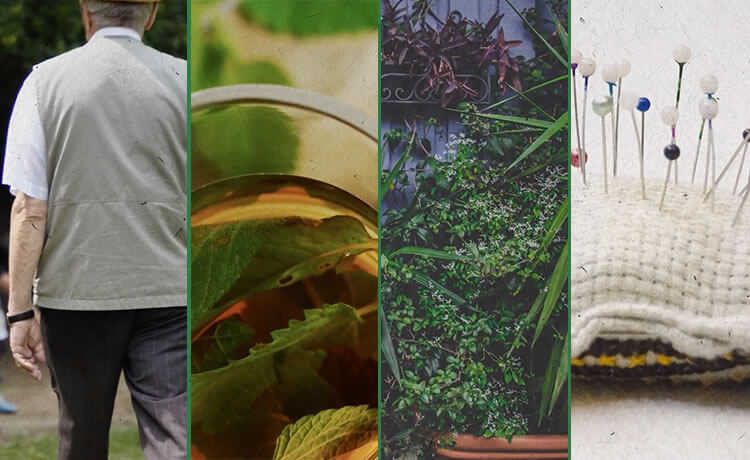What is chlorophyll?
Essential for the maintenance of life, chlorophyll has benefits if included in the diet

what is chlorophyll
The term chlorophyll was coined in 1818 by French scientists Pelletier and Cavento. Chemists noticed that by putting leaves in alcohol, a green substance was extracted from the plants. The name comes from the Greek chloros (green) and phyllon (sheet). The word refers to a group of photosynthetic pigments produced in chloroplasts (the structure responsible for the photosynthesis process) and other plant tissues.
These natural pigments are photoreceptors, that is, responsible for absorbing light. This absorbed light is used in photochemical reactions, in which plants capture sunlight and convert it into energy.
Chlorophyll has a magnesium ion at its center and a side hydrocarbon group, phytol. Magnesium is a metallic ion and for this reason chlorophyll is called a metallobiomolecule, as is hemoglobin. The molecular structure of chlorophyll is very similar to that of hemoglobin, except it has iron in its core and chlorophyll has magnesium. For this reason, chlorophyll is often called “green blood”.
It is essential for vitality in the biosphere, helping plants to grow and thus sustain life on Earth. It makes it possible for plants to synthesize their own food and be the basis of the entire food chain. Several studies associate the intake of fruits and vegetables with a lower risk of developing diseases and some studies specifically look at the potential of chlorophyll in the human body. It can bring many benefits to our health and that is why it is important to eat foods rich in chlorophyll so that we can enjoy its phytonutrients.
The different types
Plants have different colors due to the presence of other pigments together with chlorophyll, such as carotenoids (corresponds to red, orange or yellow colors). In association with chlorophyll, the other pigments, called accessory pigments, form photosystems. These accessory pigments capture light energy in different bands of light and function as “antennas”.
There are four types of chlorophyll, called: A, B, C and D.
Chlorophyll A is the most numerous type, found in almost all photosynthetic organisms. This type accounts for about 75% of all green pigments found.
The concentration of chlorophyll B is higher in shaded plants, as this type increases the wavelengths of light that the plant is able to capture. Chlorophyll B can be found in plants, green algae and euglenophytes (single-celled algae). Chlorophylls A and B are very similar in composition and are found in earth in a 3:1 ratio, respectively.
Chlorophyll C is present in some groups such as diatoms, dinoflagellates and brown algae. The last type, chlorophyll D is present in red algae. Chlorophyll types capture light more efficiently in different bands of the visible light spectrum.
Most leaves change color during the winter and this happens due to a decrease in the amount of chlorophyll. Accessory pigments do not vary significantly and, therefore, their colors start to be seen, making the leaves generally yellowish.
food

Chlorophyll is part of our diet whenever we eat vegetables, especially green ones. As a usual rule, the greener the plant is, the more it contains chlorophyll. So feel free to abuse green herbs and vegetables such as kale, spinach, chard, broccoli, parsley, watercress and arugula, as well as spirulina or chlorella, which have high concentrations of chlorophyll.
The process of cooking or dehydrating causes chemical changes in the structure of chlorophyll. Instant soups, condiments or dry foods contain less of the substance. As the temperature used increases, the concentration of chlorophyll decreases and, concomitantly, the amount of pheophytins increases. This is how the natural pH of the vegetable decreases and the dark green color of chlorophyll gives way to the yellowish green color of pheophytins. To avoid this process, and keep the dark color of the vegetables, you can cook them quickly or add baking soda during their preparation.
The single-celled freshwater alga chlorella and the cyanobacterium spirulina they are very rich in chlorophyll and are veritable micronutrient treasures. ten grams of one chlorella contain about 280 mg of chlorophyll, and the same amount of spirulina counts about 115 mg. the supplement of chlorella is the number one food supplement sales in Japan.
There are several types of supplements that promise to offer the benefits of chlorophyll in the form of capsules, tablets and concentrated liquid chlorophyllin. Liquid chlorophyllin is often used diluted in various juices.
Chlorophyll juice is very popular and you've probably seen it for sale in your neighborhood juice houses. It is very rich in fiber and therefore offers satiety, aiding in diets. Fiber causes an improvement in blood glucose levels and blood lipid profile. A diet rich in fiber helps fight diabetes and control high cholesterol. The juice also helps with digestion and intestinal transit.
- What are high fiber foods
In addition, the leaves used for juice preparation contain a wide variety of enzymes, carotenoids, vitamins such as folic acid and minerals. One of them is vitamin A, which improves the immune system and acts on the health of bones, muscles, skin, mucosa and vision.
Another popular drink very rich in chlorophyll is the matcha. The drink is served in tea ceremonies and gained popularity for its thermogenic and slimming action. Tea speeds up metabolism and has great diuretic ability, aiding in weight loss.
- The 12 Best Thermogenic Foods
the sheets of Camellia sinensis that are used in matcha are handpicked, dried and ground in a stone mill that turns very slowly. This process generates a very fine powder with a high concentration of chlorophyll.
health benefits

Chlorophyll is a good source of antioxidant nutrients such as vitamins A, C and E. These nutrients help to neutralize free radicals in the body - these particles can damage healthy cells. The green substance increases oxygenation and nutrient delivery to our cells.
- Vitamins: types, needs and times of intake
Studies associate chlorophyll intake with increased hemoglobin production, being indicated in the treatment of chronic anemia. Other health benefits associated with chlorophyll include improving body odor, treating anti-inflammatory conditions and, due to its magnesium content, relieving nervousness and controlling blood pressure.
Among the uses of chlorophyll are natural dyes and antioxidants. Cupric chlorophyllin is a synthetic derivative of chlorophyll, which is commonly used as a food additive, giving it a green color. In addition to this use, the dye has been used in pharmaceutical products and food supplements. In alternative medicine, it is used as a healing, deodorant and others. The biological effects of this dye have been studied and research shows antimutagenic, anticarcinogenic, antioxidant and radioprotective factors.
According to a study by American Chemical Society, chlorophyll has anti-inflammatory and antioxidative effects as it has the ability to improve the ability of human lymphocytes to resist water-induced oxidative damage. Thus, it would be able to prevent the process of atherosclerosis and chronic non-communicable diseases.
Chlorophyll contributes to our daily intake of magnesium, which is essential for our body and its deficiency can lead to serious complications.
Research has shown that chlorophyllin reduces the bioavailability (percentage of the body's use of a substance) of cancer-causing chemicals. Another research, by the State University of Londrina (UEL), points out chlorophyllin as an antiviral and an inhibitor of the multiplication of poliovirus, the polio virus.
An Oxford University publication demonstrates the beneficial health effects of chlorophylls through their antimutagenic and antigenotoxic properties. In it, chlorophyll is described as chemopreventive because it deactivates possible carcinogens in the digestive tract and prevents their absorption. In addition, the study points out that chlorophyll can inhibit the progression of tumors. Another study from Oxford University demonstrated that chlorophylls, chlorophyllins and porphyrins are inducers of phase 2 cytoprotective genes, which are responsible for protecting cells from oxidative damage, as well as from the onset and progression of cancer.










